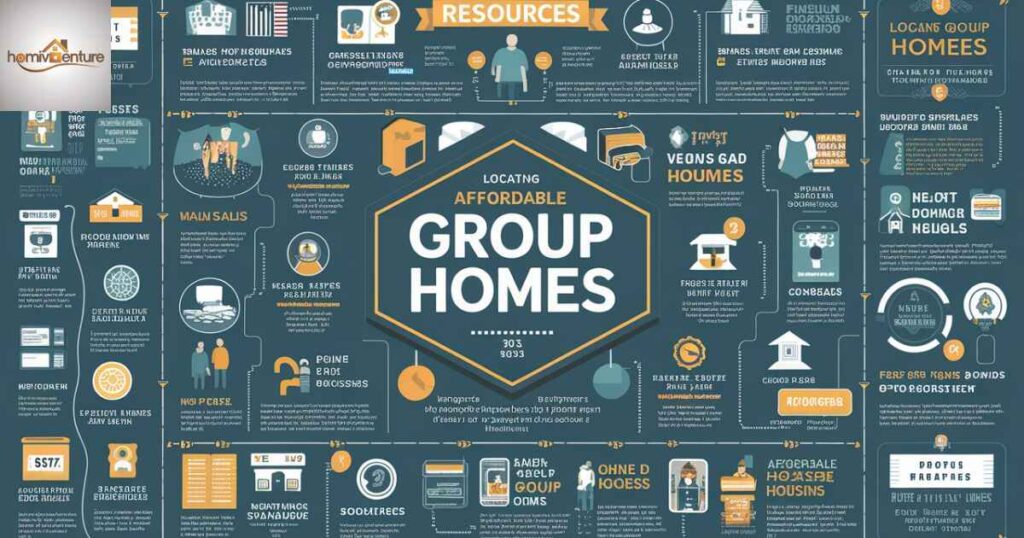Deciding to place your adult child with disabilities in a group home can be very difficult. You want them to have their independence and grow, but letting them live on their own can be dangerous. That’s why more people are placing their adult children into group homes (assisted living facilities). One of the biggest questions asked when considering a group home is, “How much does it cost?”
Group home facilities can be costly, averaging between $65,000-$120,000 annually; this covers the entire cost of the individual living in the facility, including food, utilities, and the payment to the caregivers who help the residence daily.
Luckily, many government programs will help cover some—if not all—costs for these individuals if they meet the criteria for financial assistance. However, no matter how much it costs, the popular opinion is that these facilities are worth every penny.
How Much Does It Cost To Live In A Group Home?
Each group home’s cost will differ by location, type of residence, and the degree of help needed. With that said, the annual cost will range somewhere between $60,000 to $120,000, with an average cost of $77,750 a year for a full-time help facility, with skilled nursing homes costing more towards the higher end, and assisted living or personal care being a much less expensive option.
Although that may seem a bit steep, it is essential to understand exactly what a group home has to offer your child. Each facility is set up for a specific-needs group. For example:
Supportive Housing
Supportive housing is a type of living situation where multiple adults with disabilities reside together in an apartment; they can’t rent them out separately. These homes are mainly for those who need some support but can manage day-to-day life with little help.
Some of these facilities will have a live-in staff to help with bathing, cooking, and cleaning. Other facilities do not require live-in staff and will only have aides check in throughout the day.
Most of these forms of housing are paid based on income and living expenses, where the government pays 75% of the rent, and the tenant pays 25%.
Adult Assisted Homes
An adult assisted home is a large home with multiple bedrooms with staff living in or working in shifts to help care for residents with disabilities. In these homes, the adults usually only need minimal help in specific areas of their daily lives. Aides are there for support when needed and also for the safety of the residents.
Homes can get licenses through their state for enhanced or special needs assisted living homes to care for individuals in the home who need more advanced help with daily activities, including medical support—as long as they adhere to the mandated qualifications.
Most of these facilities are non-profit or government-funded, so costs are either fully or partially covered through the state as long as the individual meets the specific qualifications for each home.
Personal Home Setting (Non-Assisted Living)
The government has been pushing for facilities to lower their capacities and utilize homes and communities in the area more often. To help with the cost, programs like The Open Doors have been created to do just that.
This program offers people who are currently living in long-term care facilities the ability to move into their own homes and have access to their community where they can make personal decisions in areas like work, personal care, and activities.
These programs are fully funded by the government and are currently paid through the states using the individual plans offered; this is ideal for those with less severe disabilities and can lead fairly productive lives without intervention.
Assisted Living Communities
An assisted living community is a residential community with apartments or semi-apartment homes that offer a community of individuals with disabilities the ability to almost live independently with access to all the help they would need daily.
Because there is more personal care intervention, these facilities are more expensive than the non-essential living communities. That is because aides and caretakers will be needed daily to help residents get through their day safely. The assisted living communities are geared towards those who need a lot of assistance in areas such as bathing, using the bathroom, eating, and medication.
The average cost for this type of living arrangement is around $3750.00 monthly but can be funded through some programs if the individual qualifies. If you do not meet qualifications for financial aid, this would have to be privately paid for.
Skilled Nursing Facility
These facilities are hospital-like facilities that offer around the clock care for those who have severe mental health conditions or physical disabilities. These can be for long-term placement of short-term stays depending on each individual situation. Skilled nursing homes have certified and skilled nurses on the premises at all times—with the experience needed to handle any situation and all emergencies.
The cost of these facilities ranges widely depending on the services provided and the location you are in; however, they can become very expensive. Some insurances may cover the care partially, leaving you to cover the rest. Most independent insurances do not cover much of these costs. However, if you qualify for Medicare or Medicaid, you are likely to get most of the stay covered.
In summary, living in a facility that requires around the clock care will cost quite a bit more than the homes designed for individuals to care for themselves with an aide check-in. Either way, it’s not going to be inexpensive. Thankfully, there is financial aid and government aid that can help cut the cost.
Recommended Post: how to take your shahada at home?
Financial Aid For Group Home Residents

There are a few different services out there that offer some financial aid for people who need placement in assisted living facilities. Some are only offered to lower-income families, while others are available to anyone looking for help.
Medicaid
Medicaid is a state program that covers medical bills and prescription payments for individuals with low-level income. It also provides financial help for long term disability placement for individuals diagnosed with a long term mental or physical illness. Although all states have their own sets of laws, most of them provide the same help and coverage.
SSI (Social Security Income)
SSI is a monthly payment given to adults who lost their income or cannot work themselves due to an injury or illness. This can be given to adults who were injured later in life and can no longer work or to someone who has always had a disability and cannot provide for themselves. The amount given can be anywhere up to $2,000.00 a month.
HUD
Also known as Section 8 Housing, this program is designed to allow low-income families or eligible families (including those with disabilities) based on government guidelines to live in any Section 8 Housing-approved home or apartment for a monthly payment a provided voucher.
DAC and SSD
A DAC is a disabled adult child who qualifies for social security income (known as Social Security Disability, or SSD benefits) based on their disabilities. These individuals must adhere to a set of qualifications to receive benefits, including financial help with medical intervention and housing.
SNAP and Food Stamps
Although not included in the financial aid of housing itself, this program helps disabled individuals pay for food and drinks; this can help someone living in a group home feel more independent and financially capable of providing for themselves. To obtain these benefits, you must be eligible according to your state’s guidelines.
Private Payment Options
There are a few different ways people can privately fund the very high cost of assisted living; this includes a reverse mortgage, annuities, or trusts. Although maybe not ideal, they are an option if there is no other way to put up the money.
It is important to note that every state offers its own sets of programs and qualifications to be accepted into each program. These qualifications can be based on income, disability, family situations, and more. Contact your local social security department or other state aid departments to see what help you could be qualified to receive.
Affordable Alternatives To Group Homes
Unless you have fantastic insurance or qualify for government assistance, the cost of group homes can be overwhelming. For some, this may not even be an option. However, there are a few affordable alternatives for assisted living that may fit your budget a little better.
Having Aides Come To The Home
If your adult child still wants to live independently, but you struggle with the idea of them being 100% on their own, you can hire a personal care aide to come to the home. These aides are typically paid between $10-$15 an hour and can spend a few hours in the home or rotate shifts with other aides to keep someone there full-time or 24/7. The aides can be there to support you or to take over duties when you need a break.
Part-Time Aides
Alternatively, you can hire an aide only when you need them rather than have them present all the time. They can come on a weekly schedule or stay on-call in case additional help is needed or if you need to travel; this may be a better option for parents who work and can’t be home to help their child all the time.
Foster Care Homes For Adults With Disabilities
These families and their homes are approved and paid for by the state to offer housing and expenses for adults with disabilities who cannot live independently. This is most commonly a temporary residence for disabled people to become more acclimated to living independently and providing for themselves.
Freedom Cares Program
With the Freedom Cares Program, you can actually hire someone in your family to take care of you. The state will train the family member to care for your child’s individual needs properly and then pay them (as long as they qualify) to be their caregiver.
An advantage to the Freedom Cares Program is that the individual in need of the service can feel more relaxed and comfortable with the care given because it can be administered by someone they know and trust.
This is only available in certain states but is a great way to keep your adult child well cared for.
Resources For Finding Affordable Group Homes

Finding helpful resources and communities is a great way to help you financially prepare to place an adult child into a group home. Many non-profit organizations or online help groups will give you advice and tips on how to cut down on the cost of group homes or assisted living facilities.
Finding non-profit organizations is as simple as online research. The internet is a great resource to narrow down your searches in local and nationwide programs designed to help you in specific areas and personal needs.
Aside from helping you find programs to help fund group home costs, these organizations and communities are a great way to connect with other families in the same situation you are in, offering support and personal views, opinions, and experiences to help you along your own journey. Having a support system in place can make transitioning your adult child into a group home that much easier.
The Arc: This is a non-profit organization designed to help adults with disabilities and their families properly prepare for the future and help the individual with disabilities lead a happy and healthy life with as little help as possible—making them their own individual person. They offer a future planning program to help prepare for costs of living in all aspects.
Easter Seals: This non-profit organization helps over a million people with disabilities and their families every year. The organization is designed to help anyone suffering from any type of life-altering disability with early intervention, job training and coaching, respite care, living arrangements, and financial help.
Parents Helping Parents: Also Known as PHP, this parent-directed community was designed to help parents interact and help one another in all aspects of raising children with disabilities. They offer support and tips on preparing your child for living on their own, along with advice on how to help cover costs for long term care or group homes.
Special Needs Alliance: This program directly connects you to lawyers educated and experienced in helping you receive the government aid you need and deserve. From Medicare and Medicaid to HUD or SNAP benefits, this group of lawyers is here to help you pay for housing.
The American Association of People with Disabilities: Also known as the AAPD, this organization has been designed to advocate for individuals with disabilities in politics and economic powers, helping to advocate for the disabled in areas like education, housing, community integration, and transportation.
Final Thoughts
Any parent would love to say, “the cost doesn’t matter,” and truly believe it. However, in reality, the cost of care for your adult child matters a lot and can make a huge difference in your life.
Finding the best option for every situation and budget is imperative to making a reasonable decision. Fortunately, there are many options for you to choose from, so you can pick the right solution for your family.







